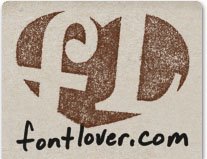I've always been a huge fan of the design competitions conducted by David E. Carter, resulting in books such as the
American Corporate Identity,
The Big Book of Logos, and
Creativity series. In addition to those volumes, works submitted are often considered for inclusion in other books Carter has written. Having my work included in 17 Carter books to date has been a great source of marketing and promotion of my design work
Last Thursday, I was somewhat stunned when opening an email with the subject line "Design the Creativity Cover" to find that a "contest" was being conducted to select the cover of the upcoming Creativity 36 volume. The email had the headline "Be the first on your block to design Creativity's cover." The text continued with:
"We are inviting you to show us how good the Creativity Annual covers can be. Because it is the first time, we know it is hard to resist.
There are zero entry fees, one winner and only two rules. The recognition you will receive for designing the Creativity 36 cover is immeasurable. If we have peaked (sic) your interest, click this link to creativityawards.com.
The winning design will be chosen this winter by Creativity Awards and HarperCollins, the book's international publisher. The winning designer or firm will be featured on our website and in our promotional campaign.
The Creativity Cover Competition deadline is October 15, 2006. Non-winning entries will be considered for subsequent Annuals."
As I read the email I could feel the hairs standing up on the back of my neck. I was really offended that a speculative "contest" was being conducted for such a purpose. I immediately responded with the following email:
"To whom it may concern:
I'm surprised that the Creativity Awards and Harper Collins are conducting a speculative design contest to select a cover for the Creative 36 publication. Being leading entities in the industry I would have thought both organizations would know better."
I also included the URL of the NO-SPEC! web site as a resource for more information. In addition, I brought the issue up on several online design forums for the discussion and reactions of others.
For me, the distinction between "design competition" and such "contests" is very simple. "Competitions" are conducted to evaluate and select graphic work already completed by a designer. Most so-called "contests" are requests for the creation of new work for possible review and selection - and that is "spec," or speculative, work. No designer should be asked to work for free as a condition for the chance of being selected as the "winner" or possibly being hired for future work.
Today I was surprised to receive an email from Tim Moran, the Director of Marketing for the Creativity Annual Awards. The subject line read "Creativity Cancels Cover Contest." The content of the email message was:
"Dear Creative Professionals,
Members of AIGA and several other graphic designers have expressed to Creativity Awards their disappointment over our cover contest. They have described this contest as speculative and against the profession’s code of ethics. They believe this kind of speculative work devalues graphic designers’ time, energy and creativity, all of which are crucial elements of the work we celebrate each year in the Creativity competition.
We agree.
Please accept our apology for this mistake. We are canceling the Creativity cover design contest immediately. We appreciate your caring enough to provide honest feedback to us, and will resume our policy of hiring a professional designer for this work."
I really appreciate the fact that the Creativity officials took the input of design professionals seriously in regards to this issue and re-evaluated the "contest" they were conducting. I'm impressed with the manner in which they have handled the situation. It instantly reconfirmed my faith in the professionalism of the Carter organization. I did take the time to send of a short "thank you" email to the Creativity Awards. I encourage others to do the same. You may send your messages to the attention of Tim Moran at info@creativityawards.com
Note: Thanks to No-Spec and The Zehnkatzen Times for their mentions of this blog entry.
© 2006 Jeff Fisher LogoMotives
 Design industry pal Kristin Ellison recently left her position as acquisitions editor at Rockport Publishers to become an editor at the new online freebie book source WOWIO. WOWIO went live as a resource for downloading free books a couple weeks ago. I received an email from Ellison earlier today suggesting I visit WOWIO and register, because the four original issues of Critique: The Magazine of Graphic Design Thinking had been posted in PDF format for downloading. She mentioned that more issues would be coming in the future.
Design industry pal Kristin Ellison recently left her position as acquisitions editor at Rockport Publishers to become an editor at the new online freebie book source WOWIO. WOWIO went live as a resource for downloading free books a couple weeks ago. I received an email from Ellison earlier today suggesting I visit WOWIO and register, because the four original issues of Critique: The Magazine of Graphic Design Thinking had been posted in PDF format for downloading. She mentioned that more issues would be coming in the future.











